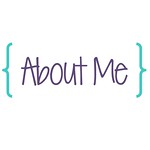To start, we used manipulatives. I made several copies of the Part-Part-Whole mat above and laminated them. I gave students an amount for the "part." They made this amount using manipulatives. We made the same amount again with manipulatives in the other "part" section. Then, students put both of the "parts" together and moved them to the "whole" section. Students counted the total. We wrote a number sentence for the doubles fact and recorded the sum. For a copy of the Part-Part-Whole mat, click here.
Now for the fun part - the games! First, students played a version of Bingo. Students took turns drawing doubles facts. Students solved the problem and then put a marker on the sum. The first player to get five in a row won.
Next, students played a game called "Who Has More?" Using the same doubles fact cards from the last game, students took turns drawing facts and recording their sums. The player with the greatest sum won the round. The player that won the most rounds, won the game.
Then, students used the doubles fact cards to play memory. I made a set of the sums for doubles facts 0-10. Students had to match the addition fact to the correct sum.
To see if students grasped the concept, students solved problems about a fictional farm. To solve the problem, students had to double the given amount, write a number sentence, and draw a picture to represent their problem. I am a firm believer in moving from the concrete, to the pictorial, to the abstract. With this lesson, students worked with manipulatives in the concrete stage. Students then moved to pictorial by drawing a picture to represent their work. We will continue to practice doubles facts and move towards the abstract stage.
How do you help students learn their basic facts?










We use xtra math for online practice, and then games similar to the ones you listed. I also pre-teach a concept using a youtube video, so they hear and see the idea before I sit down with them.
ReplyDelete-Maria
Everyone deServes to Learn
I like to use the rekenrek or number rack to give kids a visual image that they can manipulate quickly and efficiently. It also lets the. Visualize problems when the number rack isn't in front of them. There are some great free resources to get started. http://catalog.mathlearningcenter.org/store/product-8473.htm
ReplyDeleteWe use xtramath.org too. Thanks for sharing so many activities for reinforcing these skills.
ReplyDeleteWe love xtramath! These look like great games. Thanks so much for linking up.
ReplyDeleteDeirdre
A Burst of First